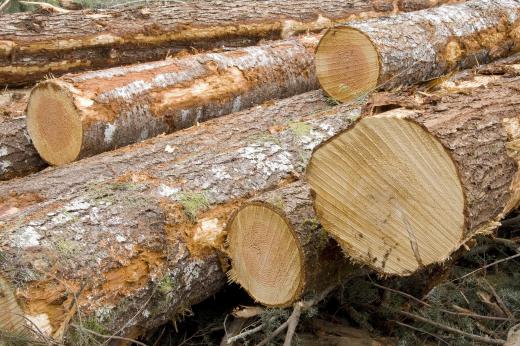A two man saw is a device used to cut wood that is powered by the strength of two men or sawyers, each stationed at opposite ends of the blade. Typically consisting of a metal saw blade and wooden handles, the saw was a tool used to fell timber prior to the advent of the power saw. Sharpened to a razor's edge by experienced saw smiths, the two man saw could cut through a standing tree trunk in a matter of minutes. The saw used a sharpening technique that allowed the saw to cut in each direction, or pull, of the saw blade. Relying on a particular rhythm, each man working on the tool depended on the other to maintain a certain speed without pinching or bending the saw blade.
The common length of a two man saw varied depending on the type of tree that was being cut. For the largest of trees such as the Northern California Red Wood and the Giant Sequoia, two or more saw blades might be brazed together in order to create a saw long enough to reach across the massive tree. Using wedges hammered into the saw's kerf, the wood cutters were able to prevent the long saws from binding or becoming stuck. The handles of most designs of two man saw were attached so that they could be easily removed, allowing the saw to be pulled out of a tree in either direction if to became stuck.

There are essentially two types of these saws, the crosscut and the felling saw. Felling saws were used by lumber men to cut down standing trees, while crosscut saws were used to cut the trees into smaller lengths once they had been cut down. They were called crosscut since they were used to cut across the grain of the tree. The crosscut blade was commonly thicker than that of a felling saw blade with the thinner blade being less prone to becoming pinched or stuck in the tree.

Images of a two man saw can be seen in ancient Roman artworks as well as Chinese drawings. The saws were used in the 1800s in North American lumber camps; however, they only began replacing axes for felling trees in the late 19th century. Although replaced by motorized chain saws in most lumbering areas around the world, the two man saw remains a staple of competitive lumberjack cutting demonstrations. Saw makers and users from around the world meet to challenge each other in this basic lumberjack competition.
